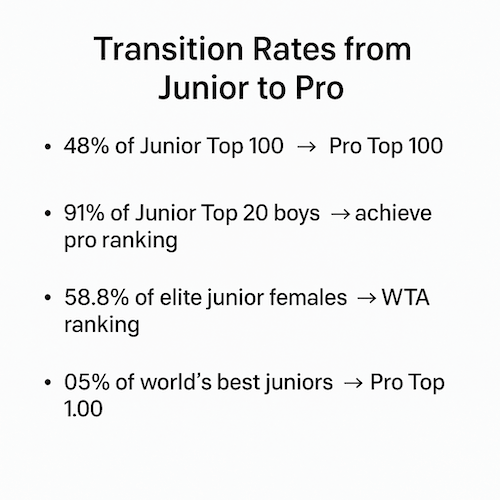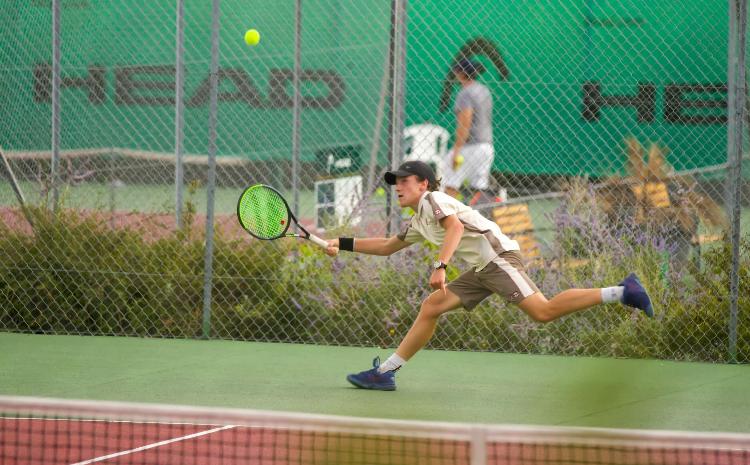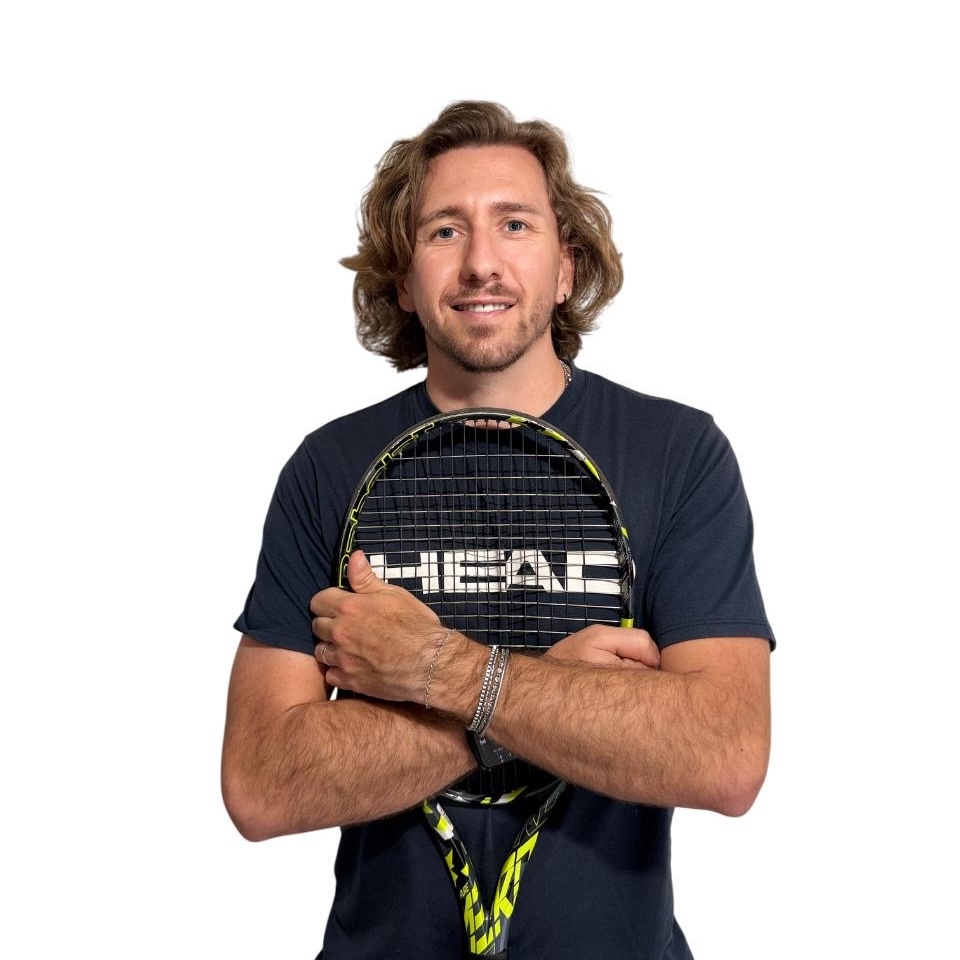Blueprint of Success: A Tennis Parenting Guide
8 p.m. Last lesson of the day. 11-year-old Teddy is moving with surprising grace across the court. Despite never having structured coaching before, he was naturally coordinated, receptive to feedback, and bubbling with energy that reminded me why I fell in love with teaching tennis.
As we wrapped up our first session together, his mother approached—she'd watched every shot like it was the Wimbledon final.
"So... what's next? What can we do to make him better?"
It's the question that follows me home from the courts more than any other. Without knowing their family's background or goals, I gave my standard response: "Your son is talented. He's worth an investment." But as I watched them walk away, I realised how many tennis parents find themselves at this exact crossroads, unsure of the next step in their tennis parenting journey.
Should they hire a private coach? Find an academy? Stick with the local club? The truth is, there's no universal answer—but having a smart, long-term tennis program makes all the difference between a child who burns out at 14 and one who discovers a lifelong passion.
The Professional Dream: Reality Check
Let me paint you a picture with some sobering numbers. Imagine a stadium filled with 2,000 junior tennis players—bright-eyed, racket-wielding kids with big dreams. Now picture this: only one of them will ever crack the professional Top 1,000. That's the harsh math of tennis—just 0.05% of junior players reach pro level. Also here I have some more stats:
• According to ITF, only 48% ranked in the junior top 100 eventually reach the professional top 100
• From a pool of 240 elite junior female players, 58.8% were eventually ranked on the WTA tour
But here's where the story gets interesting. While very few players make tennis their profession, the sport opens doors that extend far beyond prize money and rankings. I've watched former junior players earn college scholarships, build successful coaching careers, develop invaluable networks, and gain life skills that serve them in boardrooms and beyond. The secret isn't chasing the professional dream at all costs—it's building a smart, balanced player development approach from the beginning.
Yet most young players lack what they need most: a structured, thoughtful project that grows with them.

Crafting Your Tennis Blueprint: Three Pillars of Development
Think of successful tennis parenting like building a house. You need a solid foundation, consistent maintenance, and the flexibility to renovate as your child grows. Here's how to construct the on court practice:
The School-Year Foundation: Consistency Without Burnout
During the school year, your tennis program should feel like a comfortable rhythm, not a relentless march. The goal is creating training that's consistent, efficient, and—crucially—affordable for the long haul.
The magic happens when players feel comfortable going to practice every day, socialising with peers, and experiencing tennis as play, not work. But it’s easy to get trapped in generic group sessions where talented kids get lost in the crowd.
The smart solution? Consider hiring a private tutor/mentor or online coach who can provide personalised assignments, match reviews, and tailored routines without requiring full-time commitment. It's cost-effective and keeps tennis enjoyable.
The secret ingredient: Create unstructured play opportunities at home. Let them hit against a wall, play ping pong, or simply toss a ball around. Motor learning begins with joyful movement, not rigid drills.
Holiday Intensives: Refreshing the Journey
School holidays present a golden opportunity to refresh routines and build new experiences. Think of these periods as tennis renovation projects—a chance to upgrade skills, experiment with style, and lay stronger foundations for the months ahead.
The key is avoiding overcrowded holiday camps where individual attention gets diluted. Instead, seek programs that balance training with downtime, ideally allowing your child to travel with a small group of peers to maintain the social element that makes tennis fun.
The winning approach: Keep learning light and playful. Give young players ownership over their training goals. When they feel invested in their own development, motivation becomes intrinsic rather than imposed.

Tournament Experiences: Building Champions, Not Just Winners
Every player trains to compete, which makes tournament experience absolutely crucial for player development. But here's where many tennis parents get it backwards—they focus on collecting trophies instead of building resilience.
I'll never forget watching 10-year-old David after he lost his first tournament match 6-0, 6-0. His parents were devastated, already planning extra lessons and wondering if they should find a "better" coach. David, meanwhile, was analysing what went wrong and asking when he could play again. That's the mindset we want to cultivate.
Tournaments serve a deeper purpose than determining winners and losers. They normalise the experience of pressure, build pre-match routines, and teach players to compete with perspective. Most importantly, they help young athletes understand that losing is not failure—it's information.
The champion's approach: Set process-based goals that shift focus from results to improvement. Create simple pre- and post-match routines that include downtime and fun activities. Give players freedom to manage their own behaviours before and during matches, gradually increasing tournament frequency to match their mental resilience.
The Long Game: What Sustainable Tennis Parenting Really Looks Like
John O'Sullivan from the Changing the Game Project reminds us that most young athletes are still developing physically, mentally, and emotionally. The term "high-performance junior" gets thrown around carelessly, but healthy tennis parenting prioritises long-term development over early specialisation.
After 10 years of coaching, I've learned that successful tennis programs share four fundamental principles:
Tennis is a game, not a job. The moment it stops being fun, you've lost the most important battle. I've watched too many talented 14-year-olds walk away from tennis because it became a source of stress rather than joy.
You can't train everything—focus on the right things. Quality beats quantity every time.
It's expensive and time-consuming—invest wisely. Tennis requires financial commitment, but smart parents invest in experiences and coaching that provide long-term value, not short-term results.
Tennis is a marathon, not a sprint. Consistency beats trends. The flashy new training method rarely outperforms patient, progressive development.
Conclusion
The beauty of tennis isn't in guaranteeing any particular outcome—it's in providing a framework for growth, resilience, and lifelong enjoyment. Your role as a tennis parent isn't to create the next Rafael Nadal. It's to nurture a young person who approaches challenges with confidence, handles pressure with grace, and finds joy in continuous improvement.
What do you think is the most challenging part of building a tennis program for juniors?
If you'd like a deeper dive into any aspect of player development—whether it's designing effective holiday tennis programs, improving parent-coach communication, or strategic tournament planning—I'd love to continue the conversation at hello@riccardoleone.org or via social media platforms.
